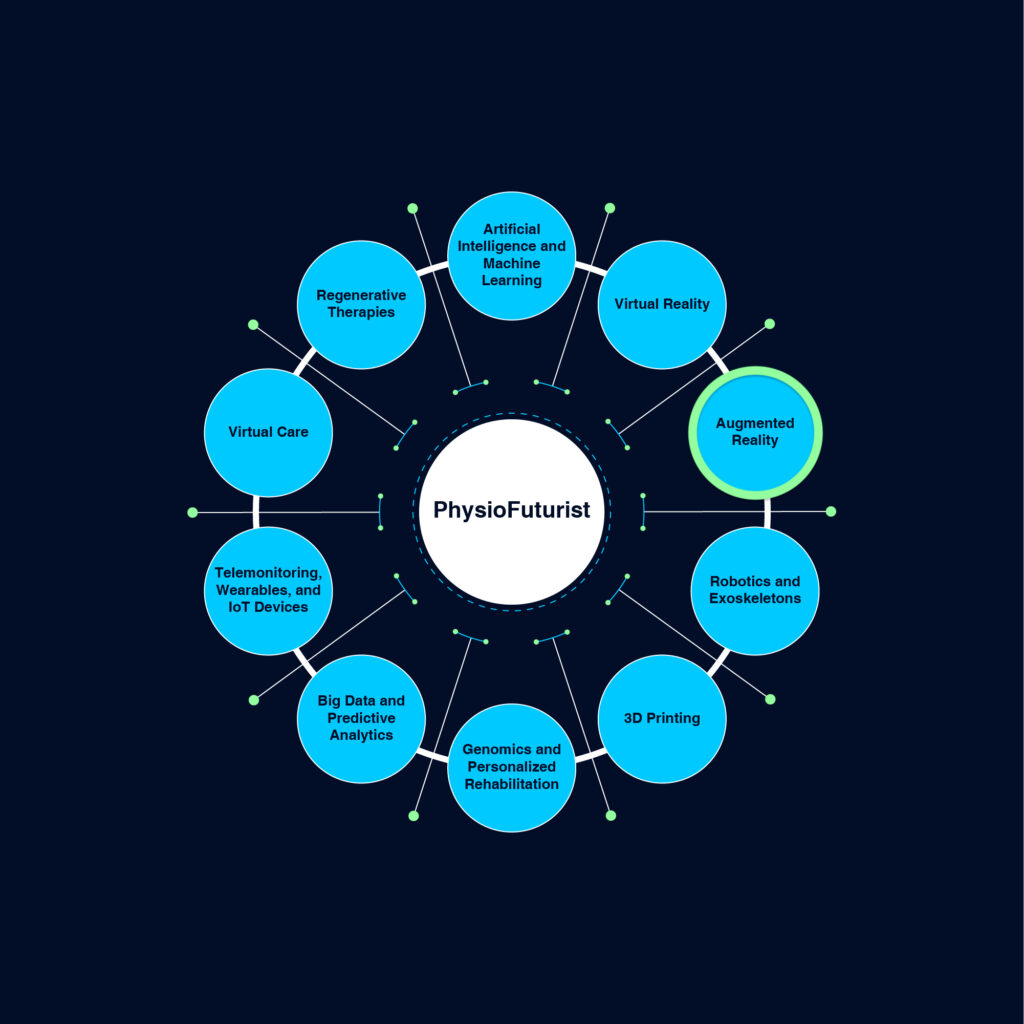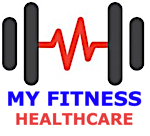This is the fourth guest post in a series written by Jason Giesbrecht – Physiopedia Plus Instructor, Senior Healthcare Leader and Physiotherapist.

Welcome back to the PhysioFuturist blog, where we explore how technology is shaping the future of physiotherapy. After last month’s exciting foray into the world of Virtual Reality, let’s shift our gaze towards another transformative technology—Augmented Reality (AR). Often regarded as the close relative of Virtual Reality, AR offers a unique blend of digital information with our physical surroundings. Physiotherapists have started using AR to enhance assessment techniques, facilitate patient engagement, and even fine-tune treatment plans. But that’s just the tip of the iceberg. This post aims to take you on a whirlwind tour of what the future holds for AR – so, what does this mean for physiotherapy?
The enormous potential of augmented reality in physiotherapy
Visualizing the invisible
The existing applications of AR in physiotherapy might seem modest. At present, AR is mainly used in gaming and marketing, but it’s rapidly infiltrating healthcare settings. Let’s stretch our imagination. Think about the revolutionary possibilities of visualizing musculoskeletal diagrams animated onto a patient’s body during treatment. AR can transform static anatomy diagrams into dynamic 3D models, which are then mapped directly onto the patient’s anatomy. This type of visualization offers clinicians a powerful tool for assessment, diagnosis, and treatment planning. Furthermore, it grants patients a deeper understanding of their condition, making them more active participants in their own recovery.
Immersive motor learning
Imagine a patient participating in a rehabilitation exercise and seeing real-time feedback on the joint angles, weight shifts, and muscle activations. This isn’t science fiction; it’s the immersive biofeedback that AR can provide. Not only does this advance motor learning, but it also allows for instant self-correction, offering real-time opportunities for improvement. By combining AR with VR, you could even create highly customizable mixed-reality rehabilitation environments.
Telehealth connection
We all know that telehealth has gained prominence in the healthcare landscape. AR could further enrich this experience by allowing physiotherapists to digitally annotate images or project therapeutic instructions directly into patients’ physical spaces. This has the potential to foster greater engagement, understanding, and therapeutic alliance during virtual visits. It could even bridge geographical divides and bring specialized rehabilitation expertise to remote areas.
Accessibility for all
AR offers unprecedented customization opportunities, even for those with visual or cognitive impairments. Through 3D models, subtitles, and audio descriptions, this technology could make health education materials more accessible and interactive. What’s more, creative applications of AR could make rehabilitation more engaging for younger patients, making the possibilities for inclusive AR interventions truly boundless.
The challenges and hurdles
While AR holds great promise, challenges such as cost, specialized training, and accessibility cannot be ignored. These factors can slow down the pace of adoption, with financial constraints being a particularly limiting factor.
An ethical compass for the future
As with any ground-breaking technology, ethical considerations also loom large. Issues around patient privacy, informed consent, and regulation must be addressed. As we stand on this new frontier, we need shared principles focused on bettering human health and safeguarding human dignity. How do we ensure that these technological advancements benefit all, rather than widening the healthcare gap across the globe?
Looking ahead
So, where do we go from here? The road ahead is paved with opportunities for AR to transform physiotherapy in ways that were once the stuff of science fiction. It’s clear that AR has the potential to revolutionize how we understand and approach rehabilitation. But it’s also evident that this change will not happen overnight. We’re at an exciting crossroads where innovation meets application, and the role of practitioners, patients, policymakers, and the public is crucial in shaping this future. There are also questions that need to be answered, and obstacles to overcome.
Let’s reflect
- What are the possibilities for human empowerment through AR in physiotherapy?
- How can we democratize access to AR in physiotherapy?
- How can healthcare policy and funding models adapt to accommodate this technology?
- What emerging ethical dilemmas should we prepare for?
- Could AR and Virtual Reality work in tandem to create a more holistic approach to physiotherapy?
That’s a wrap!
The fusion of augmented reality, virtual reality, artificial intelligence, and machine learning has remarkable implications for the future of physiotherapy. By integrating these advanced technologies, we open an entirely new realm of possibilities. AI-powered motion tracking and analysis could provide unparalleled biofeedback and allow for ultra-precise gait analysis. Machine learning algorithms can gain insight from population data to guide highly individualized treatment plans. Immersive mixed reality environments powered by this artificial intelligence could facilitate game-changing new approaches to rehabilitation and motor learning. As these exponentially advancing technologies converge, we move towards a future where treatments are tailored to the specific needs of each patient and use multidimensional data to unlock human recovery in ways never before achievable. The combined potential of these groundbreaking innovations promises to transform the landscape of physiotherapy.
As we continue our journey through the future of physiotherapy, let’s remain thoughtful, open-minded, and optimistic. We’re in this together—clinicians, patients, policymakers, and the public. It’s our collective creativity and wisdom that will shape how these technologies evolve and influence the future of physiotherapy. Let’s envision a future where technology is not an add-on but an integral part of physiotherapy practice, facilitating better outcomes for patients and a more rewarding career for therapists. After all, the future of physiotherapy is not something that happens to us; it’s something we create together.
So, let’s dream, discuss, and envision this future. One thing is certain—the potential for transformative change is vast. Let’s grasp this opportunity and shape the future of physiotherapy, step by augmented step.
Jason would love to hear your ideas on this topic, feel free to reach out to him at [email protected] to discuss the topic further; and you can follow him on Twitter and Instagram.
